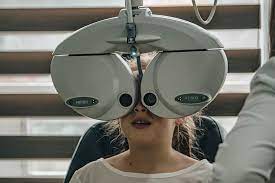Visual acuity tests play a vital role in assessing the quality of vision in children. These tests measure the ability to see fine details and provide valuable information about a child’s visual development and potential vision problems.
The Importance of Visual Acuity Tests in Pediatrics
Visual acuity is a key aspect of visual function and is crucial for daily activities such as reading, writing and learning. In children, assessing visual acuity is particularly important as undetected vision problems can negatively impact their academic performance and overall development. Visual acuity tests help identify potential vision impairments at an early stage allowing for timely intervention and management.
Different Testing Methods for Visual Acuity
Several testing methods are available to assess visual acuity in children. The choice of method depends on the child’s age, developmental stage and cooperation level. Here are some commonly used testing methods:
Teller Acuity Cards
Teller Acuity Cards utilize the principle of preferential looking. The cards consist of patterns or gratings of varying sizes and contrasts. The child’s visual acuity is determined based on their ability to preferentially look at the card with the finest details or highest contrast. This method is commonly used for infants and young children who cannot provide verbal responses.
Picture Charts or Symbol Charts
Picture charts or symbol charts such as the LEA Symbols or HOTV charts use familiar symbols or pictures instead of letters. The child is asked to identify or match the symbols or pictures on the chart. This method is often used with young children who are not yet able to recognize or name letters.
Snellen Charts
Snellen charts are widely used in visual acuity testing for both children and adults. The chart consists of letters or optotypes of various sizes. The child is asked to read or identify the smallest line of letters they can see clearly. The visual acuity is expressed as a fraction with the numerator representing the testing distance and the denominator indicating the distance at which a person with normal vision can read the same line.
E-Chart or Landolt C Chart
E-Charts or Landolt C charts are similar to Snellen charts but utilize a single optotype, typically the letter “E” or a rotated “C.” The child is asked to identify the direction in which the “E” or “C” is facing. This method is particularly useful for children who have difficulty naming letters or have language-related challenges.
Visual Acuity Tests with Technology
Technological advancements have led to the development of computerized visual acuity tests. These tests employ interactive displays, tablets or computer screens to present optotypes or stimuli. The child responds by touching the screen or pressing a button. Computerized tests often incorporate engaging elements to enhance children’s participation and attention during the examination.

Significance of Visual Acuity Tests in Pediatrics
Visual acuity tests provide crucial information about a child’s vision health and can help identify various vision problems including:
- Refractive Errors: Visual acuity tests can detect refractive errors such as nearsightedness (myopia), farsightedness (hyperopia) and astigmatism. Correcting these refractive errors with glasses or contact lenses can significantly improve a child’s visual acuity and overall visual function.
- Amblyopia: Amblyopia is commonly known as lazy eye and is a condition where the visual acuity in one eye is significantly reduced. Visual acuity tests can help identify amblyopia and prompt early intervention to prevent long-term vision loss.
- Strabismus: Strabismus refers to misalignment of the eyes that results in a lack of binocular vision. Visual acuity tests can detect significant differences in visual acuity between the eyes which indicates the presence of strabismus.
- Eye Diseases: Visual acuity tests can reveal abnormalities in visual acuity that may be indicative of underlying eye diseases or conditions such as cataracts, glaucoma or retinal disorders. Early detection and treatment of these conditions are crucial for preserving vision.
Visual acuity tests are essential tools in assessing children’s vision and detecting potential vision problems. By evaluating a child’s ability to see fine details, these tests provide valuable information about their visual health and development. Early identification of vision impairments through visual acuity testing allows for timely intervention and management ensuring optimal visual function and overall well-being for children.






